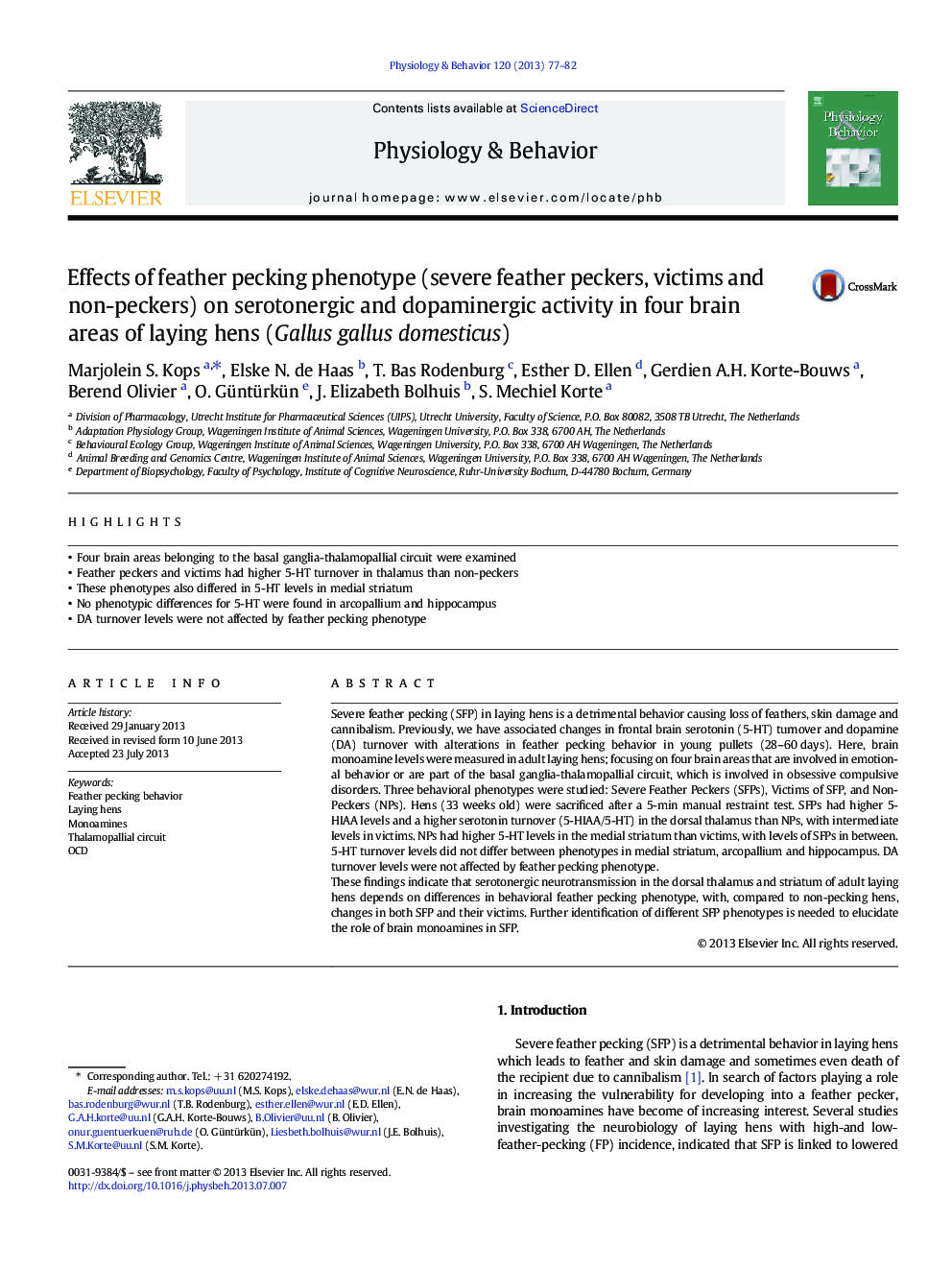| کد مقاله | کد نشریه | سال انتشار | مقاله انگلیسی | نسخه تمام متن |
|---|---|---|---|---|
| 5924625 | 1571197 | 2013 | 6 صفحه PDF | دانلود رایگان |

- Four brain areas belonging to the basal ganglia-thalamopallial circuit were examined
- Feather peckers and victims had higher 5-HT turnover in thalamus than non-peckers
- These phenotypes also differed in 5-HT levels in medial striatum
- No phenotypic differences for 5-HT were found in arcopallium and hippocampus
- DA turnover levels were not affected by feather pecking phenotype
Severe feather pecking (SFP) in laying hens is a detrimental behavior causing loss of feathers, skin damage and cannibalism. Previously, we have associated changes in frontal brain serotonin (5-HT) turnover and dopamine (DA) turnover with alterations in feather pecking behavior in young pullets (28-60Â days). Here, brain monoamine levels were measured in adult laying hens; focusing on four brain areas that are involved in emotional behavior or are part of the basal ganglia-thalamopallial circuit, which is involved in obsessive compulsive disorders. Three behavioral phenotypes were studied: Severe Feather Peckers (SFPs), Victims of SFP, and Non-Peckers (NPs). Hens (33Â weeks old) were sacrificed after a 5-min manual restraint test. SFPs had higher 5-HIAA levels and a higher serotonin turnover (5-HIAA/5-HT) in the dorsal thalamus than NPs, with intermediate levels in victims. NPs had higher 5-HT levels in the medial striatum than victims, with levels of SFPs in between. 5-HT turnover levels did not differ between phenotypes in medial striatum, arcopallium and hippocampus. DA turnover levels were not affected by feather pecking phenotype.These findings indicate that serotonergic neurotransmission in the dorsal thalamus and striatum of adult laying hens depends on differences in behavioral feather pecking phenotype, with, compared to non-pecking hens, changes in both SFP and their victims. Further identification of different SFP phenotypes is needed to elucidate the role of brain monoamines in SFP.
Journal: Physiology & Behavior - Volume 120, 15 August 2013, Pages 77-82